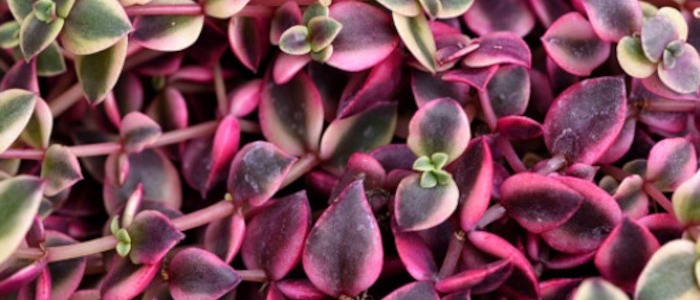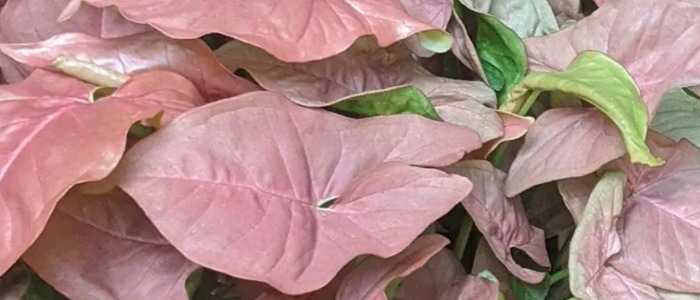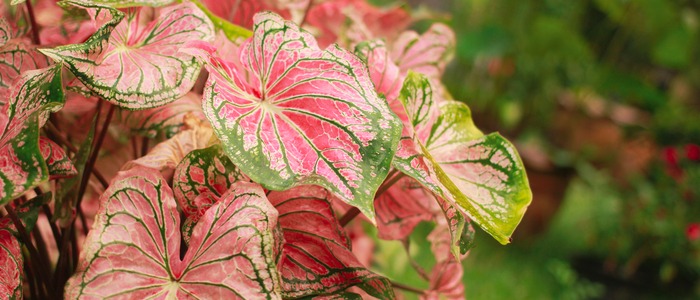The strawberry begonia is a gorgeous and unique plant that can easily thrive in both indoor and outdoor settings. It is a member of the Saxifrage family, making it related to both strawberries and houseplants. Depending on the variety, it can grow up to 24 inches tall and wide with vibrant green foliage splashed with red or even yellow colors for a beautiful accent in any room. Not only is this plant aesthetically pleasing, but it’s also easy to care for as well!
The strawberry begonia requires minimal maintenance when compared to other plants. It prefers bright indirect light, but will adapt to lower light conditions if necessary. Watering should be done sparingly as they are prone to root rot if overwatered. They also do not require much fertilizer, but once or twice a month during the growing season should suffice. Pruning helps keep them looking their best by removing any dead or damaged leaves as needed. With these tips, you’ll have no problem keeping your strawberry begonia healthy and thriving!
These plants make great additions to both indoor and outdoor settings due to their unique look and easy-to-care-for nature. Their colorful foliage adds an extra dimension of beauty that many other plants just can’t match – perfect for adding life to any home or garden space! Whether you just want something nice looking in your living room or an eye-catching accent piece in your garden, the strawberry begonia is sure to make an impact with its vibrant colors and low maintenance requirements.

Strawberry Begonia Plant Frequently Asked Questions
Are strawberry begonias easy to grow?
Yes, strawberry begonias are easy to grow they are low-maintenance plants that thrive in well-draining soil and moderate sunlight. With regular watering and occasional fertilization, these begonias can quickly fill up a space with their vibrant green leaves and delicate pink flowers. Whether you are a beginner or an experienced gardener, strawberry begonias are a perfect addition to any indoor or outdoor garden.
How often should I water my strawberry begonias?
Strawberry begonias require regular watering, but it's important not to overdo it. These plants prefer consistently moist soil, so aim to water them whenever the top inch of soil feels dry. Typically, watering them once or twice a week should be sufficient, but adjust the frequency based on the specific conditions of your environment. It's always a good idea to check the moisture levels by sticking your finger into the soil before watering.
Light Requirements for the Strawberry Begonia Plant
The spectacular color and lush growth of the strawberry begonia depend on ample and balanced light. To ensure that your prized plant lives up to its full potential, providing bright, indirect light is key. Direct sunlight can damage the leaves, causing them to burn and become vulnerable to pests and diseases.
When kept indoors, a south-facing window with plenty of natural light is ideal for strawberry begonias. For outdoor locations like decks or patios, opt for a spot with some shade during the midday sun but still provides enough exposure when temperatures are cooler in other seasons.
It’s important to note that light requirements may vary depending on age and size of your strawberry begonia. If you notice any changes in leaf color or texture, you should adjust your watering schedule accordingly – and if there are wilted or yellowed leaves, move your plant closer to a source of natural light or invest in supplemental lighting sources such as LED grow lights.
By following these tips you can be sure that your lovely strawberry begonia has all it needs for optimal health!
Watering and Humidity Requirements for Strawberry Begonia
Watering and humidity requirements for strawberry begonias are important for keeping the plant healthy and happy. Checking the soil’s moisture levels is a great first step to determining when to water your strawberry begonia. The soil should be damp but not too wet, as over-watering can cause root rot or other issues.
When it comes to humidity, strawberry begonias thrive when air is slightly humid around them. This can be achieved by misting the leaves with distilled water every few days, or by placing a small tray of pebbles filled with distilled water beneath the plant’s pot. Make sure to check these methods regularly and refill/replace the water as needed. If you live in an area with hard tap water, use distilled water instead of tap water, as high levels of minerals in tap water can damage the plant’s roots over time.
Fertilizing your strawberry begonia is also important for its health and growth. A balanced liquid fertilizer solution should be applied once every two weeks during the growing season (spring through summer). Feeding should be reduced or stopped completely during winter months when plants go dormant. Avoid over-fertilizing, as this can lead to nutrient burn and damage delicate foliage of your beloved plant.
With these simple tips on watering and humidity requirements for strawberry begonia plants, you’ll have everything you need to successfully care for it at home! By following these guidelines, you’ll ensure that your beautiful strawberry begonia thrives indoors or outdoors year-round – no matter what climate you live in!
Fertilizer Requirements for Strawberry Begonias
Fertilizing your strawberry begonia is a key factor in nurturing it to stay strong and healthy. Applying the proper fertilizer can help the plant absorb essential nutrients and flourish, yet too much of it can be harmful. It’s important to know how much to use and when to apply it for optimal results.
A balanced liquid fertilizer containing trace elements such as nitrogen, phosphorus, and potassium should be used every two weeks during its growing period. This will provide all the nourishment your strawberry begonia needs without overpowering it with too many nutrients.
When winter approaches, diminish or stop fertilizing altogether until temperatures rise in springtime again. Instead of pouring liquid fertilizer into the soil, putting slow-release granular fertilizer around its base is suggested for that time of year. This will gradually give off nutrients throughout the year while avoiding over-fertilization hazards at the same time.
Overall, feeding your strawberry begonia correctly is paramount for keeping its condition ideal year round. A balanced liquid fertilizer used biweekly during periods of growth combined with slow-release granular fertilizers utilized in colder months should ensure that your berry begonia remains healthy and vibrant each season!
Pruning and Repotting Your Strawberry Begonia Plant
Caring for your strawberry begonia plant requires regular pruning and repotting. Repotting should be done every two years or when the soil becomes compacted to ensure that the roots are not restricted. When repotting, use a pot that is slightly larger than the size of your plant and a well-draining potting mix. Additionally, loosen any compacted soil to promote air circulation and drainage.
Pruning is essential to keep your strawberry begonia healthy and vigorous. Cleanly cut off any dead or damaged leaves with sharp scissors, and trim back long stems to encourage bushier growth. Pruning also helps prevent disease by promoting new growth while removing diseased foliage, as well as preventing plants from becoming too large for their space.
Once you’ve finished pruning and repotting your strawberry begonia, make sure it’s taken care of in its new environment: keep its soil moist but don’t overwater it for the first few weeks after repotting. Feed it an all-purpose houseplant fertilizer diluted to half strength once every two to three weeks during its growing season – this will help stimulate new growth as well as preserve its vibrant look throughout the year! With these tips in mind, readers can confidently tend their strawberry begonias so they can enjoy them in both indoor and outdoor settings alike!
Propagating Strawberry Begonias
Propagating a strawberry begonia is a great way to enjoy this stunning plant in abundance. For the best results, begin by selecting a healthy stem and cutting it at an angle, so that the base is thicker than the top. Place the cutting in a jar of water with pebbles for support, then set it in bright but indirect light. Be sure to change out the water every few days until roots appear, then pot it in soil and follow typical strawberry begonia care instructions.
For even better results, consider using rooting hormones as an additional aid for root growth. These substances are available from garden centers or online and come either as liquid or powder forms; dip your cutting into either solution before planting it into soil or place some of the powder around its base before covering with dirt.
Once planted, keep your new plant consistently moist but not soggy; perform a finger test to determine when more moisture is needed! Additionally, you should fertilize every two weeks during its growing season (spring through fall) for optimal health and growth.
Finally, ensure that your propagated strawberry begonias remain safe from extreme temperatures—avoid placing them near open windows during winter months or direct sun exposure during summertime if they are outdoors. With these tips in mind, propagating strawberry begonias can be simple and rewarding!
Overall, it is essential for readers who are caring for a pink coleus plant to keep an eye out for any potential problems so they can address them promptly in order ensure their plants remain healthy and vibrant year round!
Common Problems Found When Growing Strawberry Begonia
Growing strawberry begonias can be a rewarding experience, but it is important to be aware of the common problems that can arise. Without proper care, these plants can suffer from root rot, pests and humidity issues.
Root Rot: Root rot is one of the most common problems when growing strawberry begonias and is caused by overwatering or waterlogged soil. If left unchecked, root rot will eventually kill the plant. To avoid this problem, check the soil regularly with your finger to make sure it is not overly wet or waterlogged. If you suspect that your plant has root rot, remove it from its pot and inspect the roots for signs of discoloration or decay before replanting in fresh soil.
Pests: Pests such as aphids and mealybugs can also cause problems for strawberry begonia plants if left uncontrolled. Regular inspection of leaves and stems will allow you to identify any early signs of infestation before they become too severe. To eliminate pests naturally, spray the leaves with a mixture of neem oil and water every few weeks or use insecticidal soap as a preventative measure.
Humidity: Humidity levels are important when growing strawberry begonias indoors as they prefer slightly humid conditions. To increase humidity levels around the plant, use a humidifier near its location or mist its leaves with distilled water on a daily basis. You can also place a tray filled with pebbles filled with distilled water beneath the pot to help keep moisture in the air around it.
Underwatered Plants: Another common problem associated with growing strawberry begonias is under-watering them which can lead to wilting leaves and stunted growth due to lack of vital nutrients in their soil environment. Make sure you are watering your plant regularly – checking that top inch of soil should tell you if it needs more hydration – and fertilizing every two weeks during its growing season (spring through fall) for optimal results!
Temperature: Temperature extremes should also be avoided when caring for strawberry begonia plants as they prefer mild temperatures between 60°F (15°C) – 75°F(23°C). Avoid placing them near heat sources such as radiators or fireplaces during winter months as this could dry out their leaves faster than normal causing damage over time! Additionally, never expose them to temperatures below 55°F (12°C) since this could cause irreparable harm to both their foliage and root system alike!
By understanding these common issues associated with growing Strawberry Begonia plants, readers will now be able to confidently care for their own specimen at home no matter what season it may be! With just minimal maintenance effort required on your part – following our simple guidelines outlined above – you’ll soon have a beautiful addition in any indoor/outdoor setting!
Conclusion
Caring for a strawberry begonia plant is a rewarding experience that can bring beauty to any home or garden. These plants are low-maintenance and require minimal care, yet still provide stunning foliage and vibrant flowers. With the right light, water, fertilizer, and pruning practices, strawberry begonias will thrive indoors or outdoors all year round. Propagation is also easy and can be done with just a few simple steps.
Although there are some common problems associated with growing this plant (root rot, pests, humidity issues), these can be avoided with proper care and maintenance. Overall, strawberry begonias make an excellent addition to any home or garden space due to their low-maintenance requirements and stunning foliage. Readers should feel confident in purchasing or adopting one of these beautiful plants for their own homes!
Other Pink House Plants












Pink Calla Lily Plant
Aechmea Fasciata Plant
Cryptanthus


Kalanchoe Pink Butterflies
Pink Coleus Plants